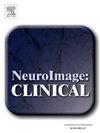Deep convolutional neural networks outperform vanilla machine learning when predicting language outcomes after stroke
IF 3.6
2区 医学
Q2 NEUROIMAGING
引用次数: 0
Abstract
Background
Current medicine cannot confidently predict patients’ language skills after stroke. In recent years, researchers have sought to bridge this gap with machine learning. These models appear to benefit from access to features describing where and how much brain damage these patients have suffered. Given the very high dimensionality of structural brain imaging data, those brain lesion features are typically post-processed from the images themselves into tabular features. With the introduction of deep Convolutional Neural Networks (CNN), which appear to be much more robust to high dimensional data, it is natural to hope that much of this image post-processing might be unnecessary. But prior attempts to demonstrate this (in the area of post-stroke prognostics) have so far yielded only equivocal results – perhaps because the datasets that those studies could deploy were too small to properly constrain CNNs, which are famously ‘data-hungry’.
Methods
The study draws on a much larger dataset than has been employed in previous work like this, referring to patients whose language outcomes were assessed once during the chronic phase post-stroke, on or around the same days as they underwent high resolution MRI brain scans. Following the model of our own and others’ past work, we use state of the art ‘vanilla’ machine learning models (boosted ensembles) to predict a variety of language and cognitive outcomes scores. These models employ both demographic variables and features derived from the brain imaging data, which represent where brain damage has occurred. These are our baseline models. Next, we use deep CNNs to predict the same language scores for the same patients, drawing on both the demographic variables, and post-processed brain lesion images: i.e., multi-input models with one input for tabular features and another for 3-dimensional images. We compare the models using 5 × 2-fold cross-validation, with consistent folds.
Results
The CNN models consistently outperform the vanilla machine learning models, in this domain.
Conclusions
Deep CNNs offer state of the art performance when predicting language outcomes after stroke, outperforming vanilla machine learning and obviating the need to post-process lesion images into lesion features.
深度卷积神经网络在预测中风后的语言结果方面优于普通机器学习
目前的医学不能自信地预测中风后患者的语言能力。近年来,研究人员试图用机器学习来弥合这一差距。这些模型似乎受益于描述这些患者遭受的脑损伤的位置和程度的特征。考虑到脑结构成像数据的高维度,这些脑损伤特征通常是由图像本身后处理成表格特征。随着深度卷积神经网络(CNN)的引入,它对高维数据的鲁棒性似乎要强得多,人们自然希望大部分图像后处理可能是不必要的。但是之前证明这一点的尝试(在中风后预后领域)到目前为止只产生了模棱两可的结果——也许是因为这些研究可以部署的数据集太小,无法适当地约束cnn,而cnn是出了名的“数据饥渴”。方法:该研究使用的数据集比以前的研究要大得多,研究对象是中风后慢性期的患者,在接受高分辨率核磁共振脑部扫描的当天或同一天左右,对他们的语言结果进行了一次评估。根据我们自己和其他人过去工作的模型,我们使用最先进的“香草”机器学习模型(增强集合)来预测各种语言和认知结果分数。这些模型采用了人口统计学变量和来自脑成像数据的特征,这些数据代表了脑损伤发生的位置。这些是我们的基线模型。接下来,我们使用深度cnn来预测相同患者的相同语言分数,同时利用人口统计学变量和后处理的脑损伤图像:即多输入模型,其中一个输入表格特征,另一个输入三维图像。我们使用5 × 2倍交叉验证比较模型,具有一致的折叠。结果在这一领域,CNN模型始终优于普通机器学习模型。深度cnn在预测中风后的语言结果方面提供了最先进的性能,优于普通机器学习,并且避免了将病变图像后处理为病变特征的需要。
本文章由计算机程序翻译,如有差异,请以英文原文为准。
求助全文
约1分钟内获得全文
求助全文
来源期刊

Neuroimage-Clinical
NEUROIMAGING-
CiteScore
7.50
自引率
4.80%
发文量
368
审稿时长
52 days
期刊介绍:
NeuroImage: Clinical, a journal of diseases, disorders and syndromes involving the Nervous System, provides a vehicle for communicating important advances in the study of abnormal structure-function relationships of the human nervous system based on imaging.
The focus of NeuroImage: Clinical is on defining changes to the brain associated with primary neurologic and psychiatric diseases and disorders of the nervous system as well as behavioral syndromes and developmental conditions. The main criterion for judging papers is the extent of scientific advancement in the understanding of the pathophysiologic mechanisms of diseases and disorders, in identification of functional models that link clinical signs and symptoms with brain function and in the creation of image based tools applicable to a broad range of clinical needs including diagnosis, monitoring and tracking of illness, predicting therapeutic response and development of new treatments. Papers dealing with structure and function in animal models will also be considered if they reveal mechanisms that can be readily translated to human conditions.
 求助内容:
求助内容: 应助结果提醒方式:
应助结果提醒方式:


